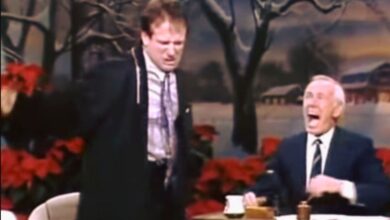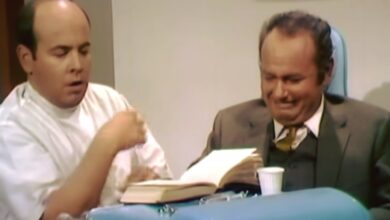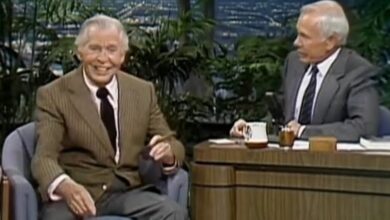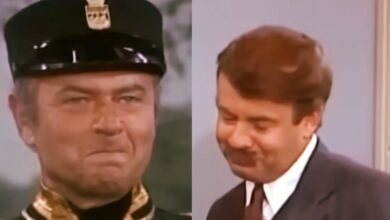The Dixie Cups’ “Chapel of Love” Redefines the Soundtrack of Young Love in 1964
Released in the spring of 1964, The Dixie Cups’ “Chapel of Love” instantly captured the hearts of listeners and became an anthem for young romance. In a rapidly changing musical landscape, where the British Invasion was beginning to take hold, this bright, exuberant song provided an American response full of innocence and optimism. It shot to number one on the Billboard Hot 100, replacing the Beatles’ “Love Me Do,” and stayed at the top for three weeks, signaling a new chapter in American pop and girl group history.
The Dixie Cups, hailing from New Orleans, were composed of sisters Barbara Ann and Rosa Lee Hawkins and their cousin Joan Marie Johnson. Their roots in gospel and traditional New Orleans music gave them a distinctive sound—rich in harmonies and brimming with a natural, easy charm. Their ability to blend street-corner doo-wop sensibilities with polished pop production set them apart from many of their contemporaries and helped them stand out during a competitive era.
The creation of “Chapel of Love” was the work of legendary songwriters Jeff Barry, Ellie Greenwich, and Phil Spector. Originally intended for The Ronettes, the song found its true voice in The Dixie Cups, who recorded it with a heartfelt sincerity that perfectly matched its lyrics. The theme was simple but powerful: the joy and anticipation of getting married. In a time when marriage was a major milestone for young people, the song struck a resonant chord across the country.
Produced by Jerry Leiber and Mike Stoller, the recording session for “Chapel of Love” emphasized a clean, upbeat sound that highlighted the trio’s natural harmonies. The instrumentation—featuring bright brass, chiming bells, and a buoyant rhythm section—created an atmosphere of pure celebration. Barbara Ann Hawkins’ lead vocal delivered a warm, confident performance, while the backing harmonies added depth and sparkle, perfectly capturing the excitement of a young bride’s big day.
Upon its release, “Chapel of Love” was embraced almost immediately. It soared to the top of the Billboard Hot 100 by early June 1964, dethroning the Beatles at a time when British bands seemed unstoppable. This achievement not only established The Dixie Cups as major stars but also proved that American girl groups could still dominate the charts during the British Invasion. The song also reached high positions in Canada, the United Kingdom, and Australia, confirming its international appeal.
Culturally, the impact of “Chapel of Love” was immense. It became a staple at weddings, proms, and other celebrations of young love. Its cheerful, forward-looking message offered a comforting counterpoint to the uncertainty of the 1960s, a decade increasingly marked by social upheaval. In many ways, the song preserved a sense of innocence that was rapidly disappearing from the broader cultural conversation.
For The Dixie Cups, the success of “Chapel of Love” was transformative. It led to a string of follow-up hits, including “People Say” and “Iko Iko,” and cemented their status as one of the leading girl groups of the era. The exposure brought television appearances, national tours, and a level of fame that allowed them to continue making music professionally for decades. Their New Orleans heritage remained a cornerstone of their identity, influencing future generations of artists from the region.
The influence of “Chapel of Love” extended beyond The Dixie Cups’ own career. It inspired countless other girl groups and solo artists to embrace themes of romance and optimism in their music. The song also underscored the power of tight harmonies and simple, relatable storytelling, elements that would remain central to pop and soul music in the decades to follow.
Numerous artists have covered “Chapel of Love” over the years, from Bette Midler’s exuberant 1970s version to Elton John’s playful inclusion of the song in live performances. Each interpretation has brought something new to the track while maintaining the essential spirit of joy and celebration. The fact that it continues to be reimagined speaks to its enduring charm and universal appeal.
During the period when “Chapel of Love” dominated the airwaves, the United States was experiencing significant social and political change. Amid the turbulence of civil rights struggles and shifting cultural norms, songs like “Chapel of Love” offered a sense of continuity and comfort. Its timeless message of love and commitment provided a reassuring soundtrack during a time of uncertainty.
The long-term legacy of “Chapel of Love” is undeniable. It continues to feature prominently on oldies radio stations, wedding playlists, and movie soundtracks. Its simple, joyful melody and heartfelt lyrics have ensured that it remains a go-to song for celebrating love, proof of its lasting emotional power.
In broader musical terms, “Chapel of Love” helped shape the future of pop music by showing that songs centered around straightforward, emotional storytelling could achieve massive success. It influenced not only the girl groups that followed but also the broader trend toward relatable, everyday themes in pop music.
Though The Dixie Cups would never quite replicate the meteoric success of “Chapel of Love,” they continued to perform and record, maintaining their place as beloved figures in American music history. Their enduring appeal lies in their ability to convey genuine emotion through music that feels both timeless and deeply personal.
Ultimately, “Chapel of Love” remains a vibrant, joyful testament to the power of simple storytelling and heartfelt performance. More than fifty years after its release, it continues to make hearts soar and feet tap, a true classic that captures the excitement of love in its purest form. For The Dixie Cups, it was not just a hit—it was a legacy, forever linking them to one of the happiest sounds of the American pop tradition.





